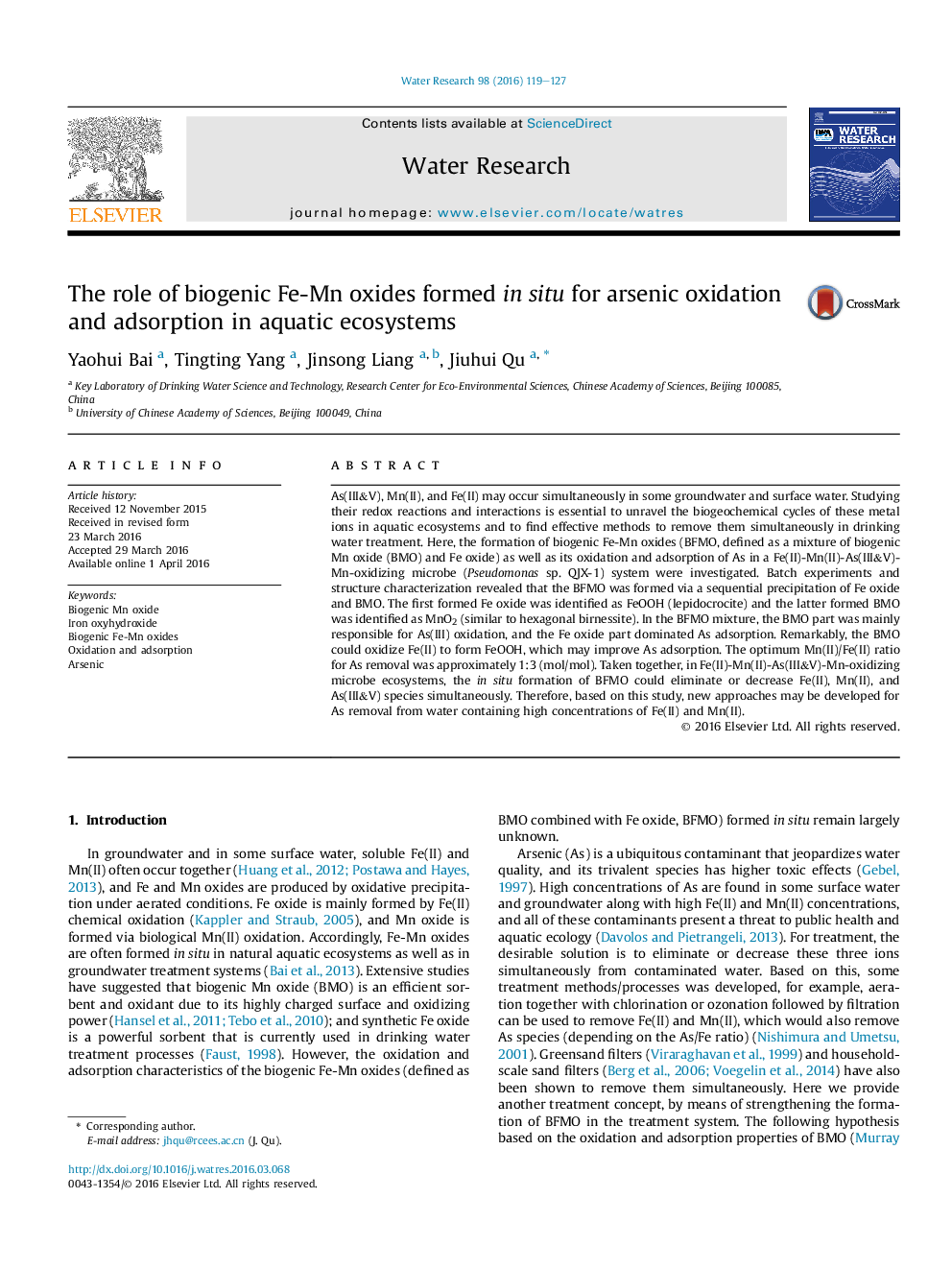| کد مقاله | کد نشریه | سال انتشار | مقاله انگلیسی | نسخه تمام متن |
|---|---|---|---|---|
| 4480976 | 1623070 | 2016 | 9 صفحه PDF | دانلود رایگان |

• Mn(II), Fe(II), and As species may coexist in aquatic ecosystems.
• BFMO forms via biological oxidation of Mn(II) and chemical oxidation of Fe(II).
• BFMO formed in situ can oxidize and adsorb As species.
• The BMO part dominates As(III) oxidation and FeOOH dominates As adsorption.
• Mn(II), Fe(II), and As(III&V) are eliminated or reduced simultaneously.
As(III&V), Mn(II), and Fe(II) may occur simultaneously in some groundwater and surface water. Studying their redox reactions and interactions is essential to unravel the biogeochemical cycles of these metal ions in aquatic ecosystems and to find effective methods to remove them simultaneously in drinking water treatment. Here, the formation of biogenic Fe-Mn oxides (BFMO, defined as a mixture of biogenic Mn oxide (BMO) and Fe oxide) as well as its oxidation and adsorption of As in a Fe(II)-Mn(II)-As(III&V)-Mn-oxidizing microbe (Pseudomonas sp. QJX-1) system were investigated. Batch experiments and structure characterization revealed that the BFMO was formed via a sequential precipitation of Fe oxide and BMO. The first formed Fe oxide was identified as FeOOH (lepidocrocite) and the latter formed BMO was identified as MnO2 (similar to hexagonal birnessite). In the BFMO mixture, the BMO part was mainly responsible for As(III) oxidation, and the Fe oxide part dominated As adsorption. Remarkably, the BMO could oxidize Fe(II) to form FeOOH, which may improve As adsorption. The optimum Mn(II)/Fe(II) ratio for As removal was approximately 1:3 (mol/mol). Taken together, in Fe(II)-Mn(II)-As(III&V)-Mn-oxidizing microbe ecosystems, the in situ formation of BFMO could eliminate or decrease Fe(II), Mn(II), and As(III&V) species simultaneously. Therefore, based on this study, new approaches may be developed for As removal from water containing high concentrations of Fe(II) and Mn(II).
Figure optionsDownload high-quality image (204 K)Download as PowerPoint slide
Journal: Water Research - Volume 98, 1 July 2016, Pages 119–127